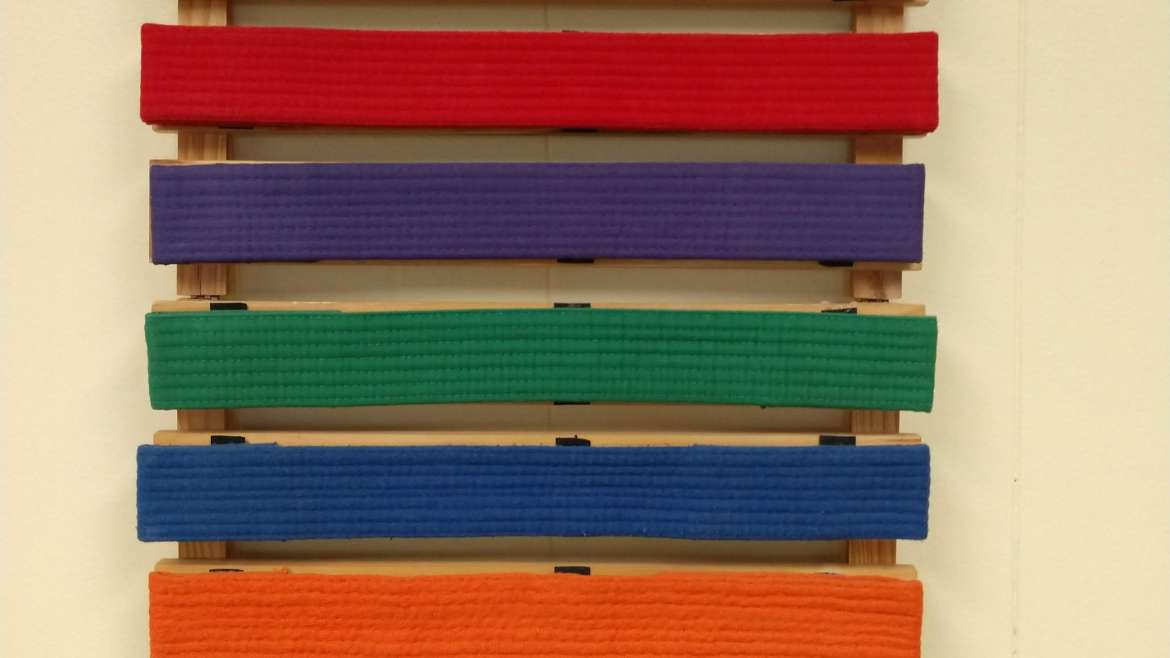(This is a guest post by Alan Gochin.)
When a new student begins their training, they are continuously being monitored by the Sensei. In today’s karate, a student’s progress is measured by their ability to retain and improve upon the quality of their basic skills and their katas. Once the Sensei feels that the student has become confident with a prescribed level of techniques, he will allow them to test for their next belt.
Following a successful test, at an informal belt ceremony, a student is awarded the next rank (kyu) which advances them within the dojo and among the other students. Upon removal of their current belt, the Sensei will present the student with a new belt displaying the appropriate color.
The colored belt system of showing a student’s rank is usually attributed to Jigoro Kano, the founder of Judo. Gichin Funakoshi borrowed from Judo to introduce a similar style of relative ranking for karate students, probably in the 1930s or 1940s.
There are ten kyu levels in Shotokan karate; in Shuto Karate Club, they correspond to the following colors, in increasing level of skill:
- 10th kyu – White belt
- 9th kyu – Yellow belt
- 8th kyu – Orange belt
- 7th kyu – Blue belt
- 6th kyu – Green belt
- 5th kyu – Purple belt
- 4th kyu – Red belt
- 3rd kyu – Brown belt
- 2nd kyu – Brown belt
- 1st kyu – Brown belt (w/ Black middle stripe)
Beyond 1st kyu, child students train for their Junior Black belt. They continue advancing with new skills through the Junior Black belt range (middle stripes from Yellow through Brown). A full Black belt (Sho Dan) is awarded around the age of 16, when the student has proven the required levels of skill, discipline and especially maturity.
At 1st kyu, adults are now training for an adult black belt rank. Interestingly, the first-level black belt rank is called “sho dan,” or “beginner’s rank.” Once a student achieves their first degree of black belt, it merely marks the beginning of their real training.
From there on, advancement intervals are two years or longer, as your rank increases. Testing for full ranks at Shuto Karate Club occurs on a biannual basis; however, for children, there is a half-rank at each color, which a student can test for, informally, in between full exams, at the Sensei’s discretion.


